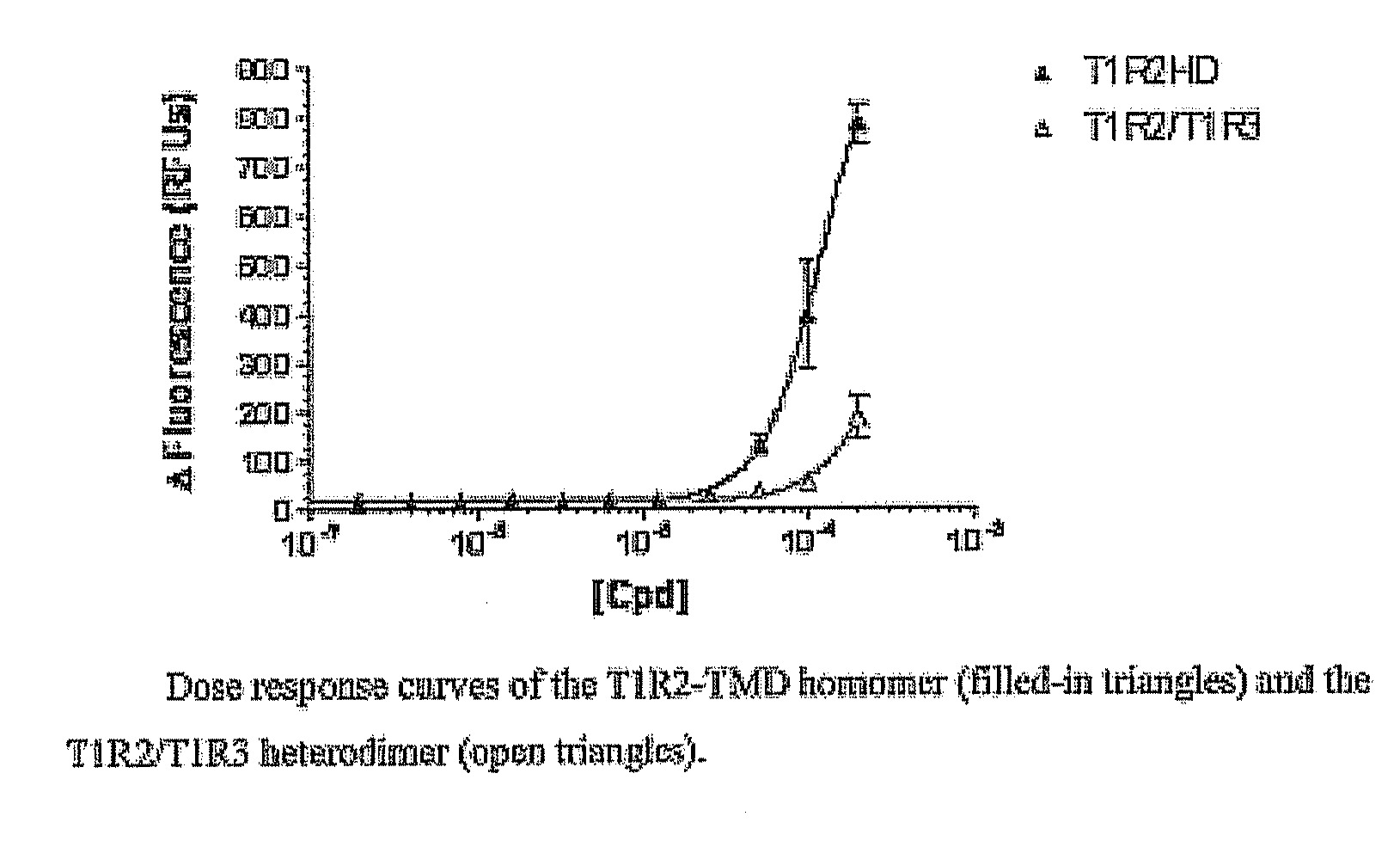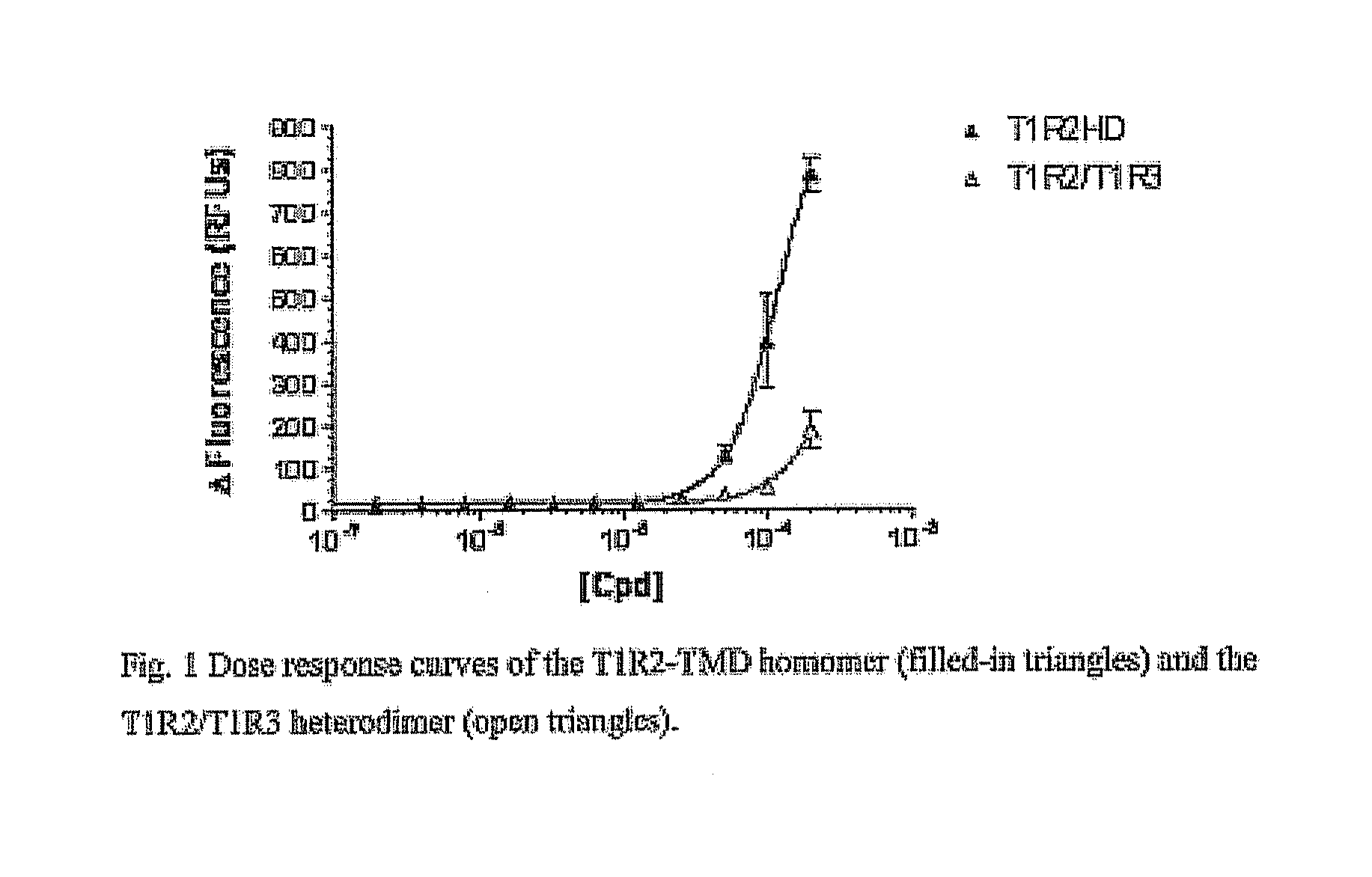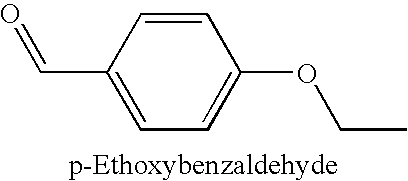Method relating to sweetness enhancement
a technology of sweetness enhancement and enhancement method, which is applied in the field of identification of agents, can solve the problems of not being able to screen for specific modulators, excluding vft ligands, and t1r2/t1r3 receptors, and not being able to achieve known screening methods
- Summary
- Abstract
- Description
- Claims
- Application Information
AI Technical Summary
Benefits of technology
Problems solved by technology
Method used
Image
Examples
examples
[0252]An overview of the examples is given below.[0253]Example 1 describes a general method for measuring taste receptor activity.[0254]Examples 2-5 describe the preparation of the different T1R vector constructs.[0255]Examples 6-8 describe the transfection of cells with the constructs.[0256]Examples 9-12 describe the identification, without limitation, of a variety of sweetness enhancers.[0257]Example 13 describes a general method of measuring sweetness.[0258]Examples 14-20 describe control experiments measuring sweetness of an enhancer in the absence of another sweet tastant.[0259]Examples 21-29 relate to mixtures of sweetness enhancers with sweet tastants.[0260]Examples 30-33 describe control experiments measuring sweetness of an enhancer in the absence of another sweet tastant.[0261]Example 34-36 shows admixtures of two or more sweetness enhancers together with a sweet tastant.
[0263]Fluo-4 is a fluorescent indicator for intracellular calcium and allo...
PUM
| Property | Measurement | Unit |
|---|---|---|
| Fraction | aaaaa | aaaaa |
| Fraction | aaaaa | aaaaa |
| Fraction | aaaaa | aaaaa |
Abstract
Description
Claims
Application Information
 Login to View More
Login to View More - R&D
- Intellectual Property
- Life Sciences
- Materials
- Tech Scout
- Unparalleled Data Quality
- Higher Quality Content
- 60% Fewer Hallucinations
Browse by: Latest US Patents, China's latest patents, Technical Efficacy Thesaurus, Application Domain, Technology Topic, Popular Technical Reports.
© 2025 PatSnap. All rights reserved.Legal|Privacy policy|Modern Slavery Act Transparency Statement|Sitemap|About US| Contact US: help@patsnap.com



